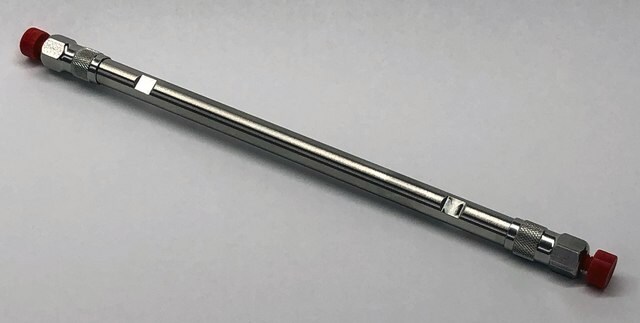Kluczowe dokumenty
23000
2-Chloroethanol
puriss. p.a., ≥99.0% (GC)
Synonim(y):
Ethylene chlorohydrin
About This Item
Polecane produkty
gęstość pary
2.78 (vs air)
Poziom jakości
ciśnienie pary
5 mmHg ( 20 °C)
klasa czystości
puriss. p.a.
Próba
≥99.0% (GC)
Formularz
liquid
temp. samozapłonu
797 °F
granice wybuchowości
16 %
zanieczyszczenia
≤0.5% water
współczynnik refrakcji
n20/D 1.441 (lit.)
n20/D 1.442
bp
129 °C (lit.)
mp
−89 °C (lit.)
gęstość
1.201 g/mL at 25 °C (lit.)
ślady kationów
Al: ≤0.5 mg/kg
Ba: ≤0.1 mg/kg
Bi: ≤0.1 mg/kg
Ca: ≤10.0 mg/kg
Cd: ≤0.05 mg/kg
Co: ≤0.02 mg/kg
Cr: ≤0.1 mg/kg
Cu: ≤0.02 mg/kg
Fe: ≤0.5 mg/kg
K: ≤0.5 mg/kg
Li: ≤0.1 mg/kg
Mg: ≤0.1 mg/kg
Mn: ≤0.02 mg/kg
Mo: ≤0.1 mg/kg
Na: ≤2 mg/kg
Ni: ≤0.1 mg/kg
Pb: ≤0.1 mg/kg
Sr: ≤0.1 mg/kg
Zn: ≤0.1 mg/kg
grupa funkcyjna
chloro
hydroxyl
ciąg SMILES
OCCCl
InChI
1S/C2H5ClO/c3-1-2-4/h4H,1-2H2
Klucz InChI
SZIFAVKTNFCBPC-UHFFFAOYSA-N
Szukasz podobnych produktów? Odwiedź Przewodnik dotyczący porównywania produktów
Hasło ostrzegawcze
Danger
Zwroty wskazujące rodzaj zagrożenia
Zwroty wskazujące środki ostrożności
Klasyfikacja zagrożeń
Acute Tox. 1 Dermal - Acute Tox. 1 Inhalation - Acute Tox. 2 Oral - Aquatic Chronic 2 - Eye Dam. 1 - Flam. Liq. 3 - Met. Corr. 1
Kod klasy składowania
3 - Flammable liquids
Klasa zagrożenia wodnego (WGK)
WGK 3
Temperatura zapłonu (°F)
131.0 °F - closed cup
Temperatura zapłonu (°C)
55 °C - closed cup
Środki ochrony indywidualnej
Eyeshields, Faceshields, Gloves, type ABEK (EN14387) respirator filter
Wybierz jedną z najnowszych wersji:
Masz już ten produkt?
Dokumenty związane z niedawno zakupionymi produktami zostały zamieszczone w Bibliotece dokumentów.
Klienci oglądali również te produkty
Nasz zespół naukowców ma doświadczenie we wszystkich obszarach badań, w tym w naukach przyrodniczych, materiałoznawstwie, syntezie chemicznej, chromatografii, analityce i wielu innych dziedzinach.
Skontaktuj się z zespołem ds. pomocy technicznej












